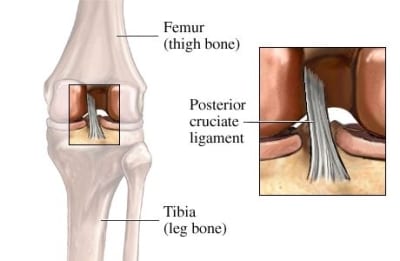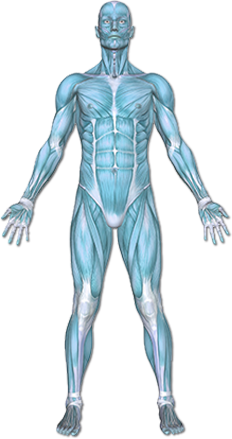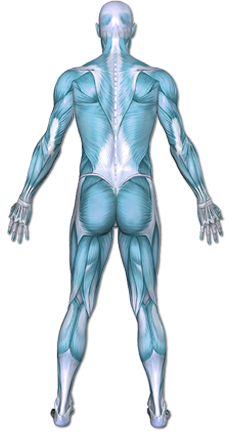PCL Tear
The posterior cruciate ligament (PCL) is connective tissue located within the knee. The PCL connects the thighbone to the shinbone. This connection keeps the shinbone from moving too far backward, stabilizing the knee.


Copyright © Nucleus Medical Media, Inc.
This content was created using EBSCO’s Health Library
The PCL ligament can become strained or torn when a strong force is applied to it. This force can occur during sports or other high-stress activity.
This content was created using EBSCO’s Health Library
Factors that may increase your chance of injuring the PCL include:
- Sports injury
- Motor vehicle accident
- Fall on a bent knee
- Strong force to the leg immediately below the kneecap
- Knee dislocation
This content was created using EBSCO’s Health Library
A PCL tear may cause:
- Pain and swelling in the knee
- Soreness in the area behind the knee
- Weakness or instability in the knee
- Difficulty walking
- Pain when moving the knee
This content was created using EBSCO’s Health Library
You will be asked about your symptoms and medical history. A physical exam will be done. Images may need to be taken of the internal structure of your knee. This can be done with:
- X-ray
- MRI scan
Ligament sprains are graded according to the severity:
- Grade 1—Mild ligament damage.
- Grade 2—Partial tearing of the ligament.
- Grade 3—Complete tearing of the ligament.
This content was created using EBSCO’s Health Library
Talk with your doctor about the best treatment plan for you. Recovery time ranges depending on the grade of your injury. Physical therapy treatment steps may include:
- Exercises to help promote recovery. Specifically, therapists will prescribe a program to strengthen the whole leg as well improve its range of motion.
- Balance exercises will allow you to return to your daily activities, including work and sports while decreasing your risk of falling and reinjuring yourself.
- Hands on treatment to keep your knee joint from becoming stiff
- Ice and vasopneumatic pressure to reduce any swelling and pain
This content was created using EBSCO’s Health Library
Some steps that may help decrease your chance of getting a PCL injury include:
- Protect your knees by doing regular strengthening exercises for your thighs.
- Maintain proper technique when exercising or playing sports.
This content was created using EBSCO’s Health Library
This content was created using EBSCO’s Health Library
RESOURCES:
- American Academy of Orthopaedic Surgeons
http://orthoinfo.org
- American Orthopaedic Society for Sports Medicine
http://www.sportsmed.org
CANADIAN RESOURCES:
- Canadian Orthopaedic Association
- Canadian Orthopaedic Foundation
http://www.canorth.org
REFERENCES:
- Knee sprains and meniscal injuries. Merck Manual for Health Care Professionals. Available at: http://www.merckmanuals.com/professional/injuries_poisoning/fractures_dislocations_and_sprains/knee_sprains_and_meniscal_injuries.html Updated August 2013. Accessed February 28, 2014.
- Ligament injuries to the knee. John Hopkins Medicine website. Available at. http://www.hopkinsmedicine.org/healthlibrary/conditions/adult/orthopaedic_disorders/ligament_injuries_to_the_knee_85,P00926/ Accessed February 28, 2014.
- Posterior cruciate ligament injuries. American Academy of Orthopaedic Surgeons Ortho Info website. Available at: http://orthoinfo.aaos.org/topic.cfm?topic=A00420 Updated February 2009. Accessed February 28, 2014.
- Posterior cruciate ligament (PCL) injury. EBSCO DynaMed website. Available at: http://www.ebscohost.com/dynamed Updated February 13, 2014. Accessed February 28, 2014.
- 10/26/2010 DynaMed’s Systematic Literature Surveillance http://www.ebscohost.com/dynamed: Massey T, Derry S, Moore R, McQuay H. Topical NSAIDs for acute pain in adults. Cochrane Database Syst Rev. 2010 (6):CD007402.
This content was created using EBSCO’s Health Library


